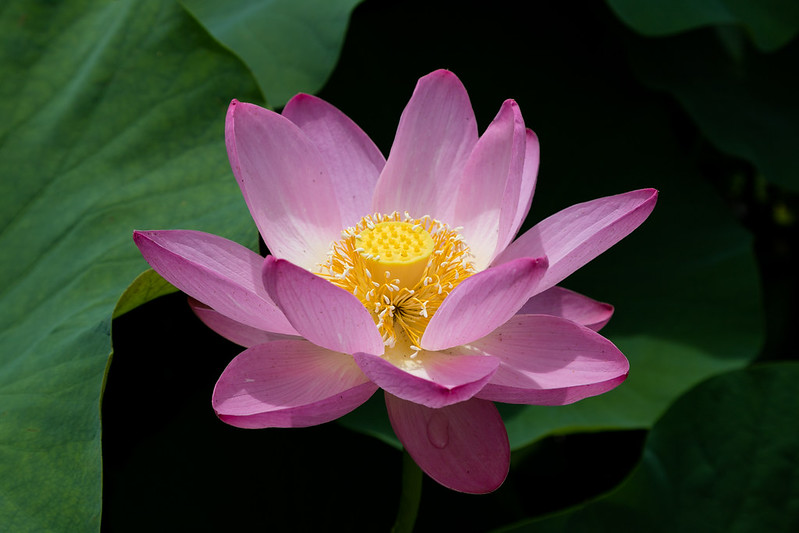
The True Essence of the Lotus
Nelumbo nucifera (lotus) is an aquatic plant from the family Nelumbonaceae. Often cultivated in water gardens and considered the national flower of India and Vietnam, the lotus is a symbolic flower in Buddhism. Buddha and bodhisattva images are often seen seated on lotus flowers connoting that the flower can also double as a comfortable chair, which may be the key to sitting for quite a long period of time while meditating. The lotus position is thus named because one tends to look like a lotus flower when one is seated in that way. The lotus is also said to represent the womb of the world in the Womb World Mandala of Shingon Buddhism. The lotus seeds may also be viable for many years. The oldest known lotus germination is from 1,300 year old seeds recovered from a dry lakebed in northeastern China.
In Japan, the lotus is a popular plant. Kanrensetsu is the lotus viewing season. Special boats made available during the season allow people to witness the beautiful spectacle in ponds or lakes where lotus flowers are plentiful. The flower is revered because of its resilience to rise from the dirty water and bloom into a beautiful flower. This process is said to symbolize attaining enlightenment. The fleeting beauty of the flower is also compared to the cycle of life. Many attest that you can hear the actual sound as the flowers crack open as they bloom.
Buddha statue on a lotus throne.
The lotus plant has many uses. The dried seed heads, which resemble the spout of a watering can, are coveted as decorative plants once dried, and make wonderful long-lasting flower arrangements. The seeds, young leaves, flowers, and roots are all edible. The petals can be used as garnish, some huge leaves are used for wrapping food, young lotus stems can be used for salads, and the lotus root is an ingredient that has many uses. It is used in making soups, braised and stir fried dishes, and oftentimes the lotus rootlets are pickled.
Kinpira renkon with carrots and sesame seeds.
The common way of pickling is with rice vinegar, chili, garlic, and sugar. It adds more texture and flavor to a meal. The stamens are also dried and made into a type of herbal tea called liánhuā cha in Chinese, and it is also used to add to the scent of tea leaves in Vietnam known as trà sen, chè sen, or chè ướp sen. Lotus nuts or seeds can be also be eaten raw or dried then popped like popcorn. It can also be boiled to make a paste and is a popular ingredient in making pastries such as rice flour pudding, mooncake, and daifuku. The lotus is more than a pretty flower. Its many uses and symbolic meanings give us a whole new perspective when appreciating the true essence of the lotus plant.

